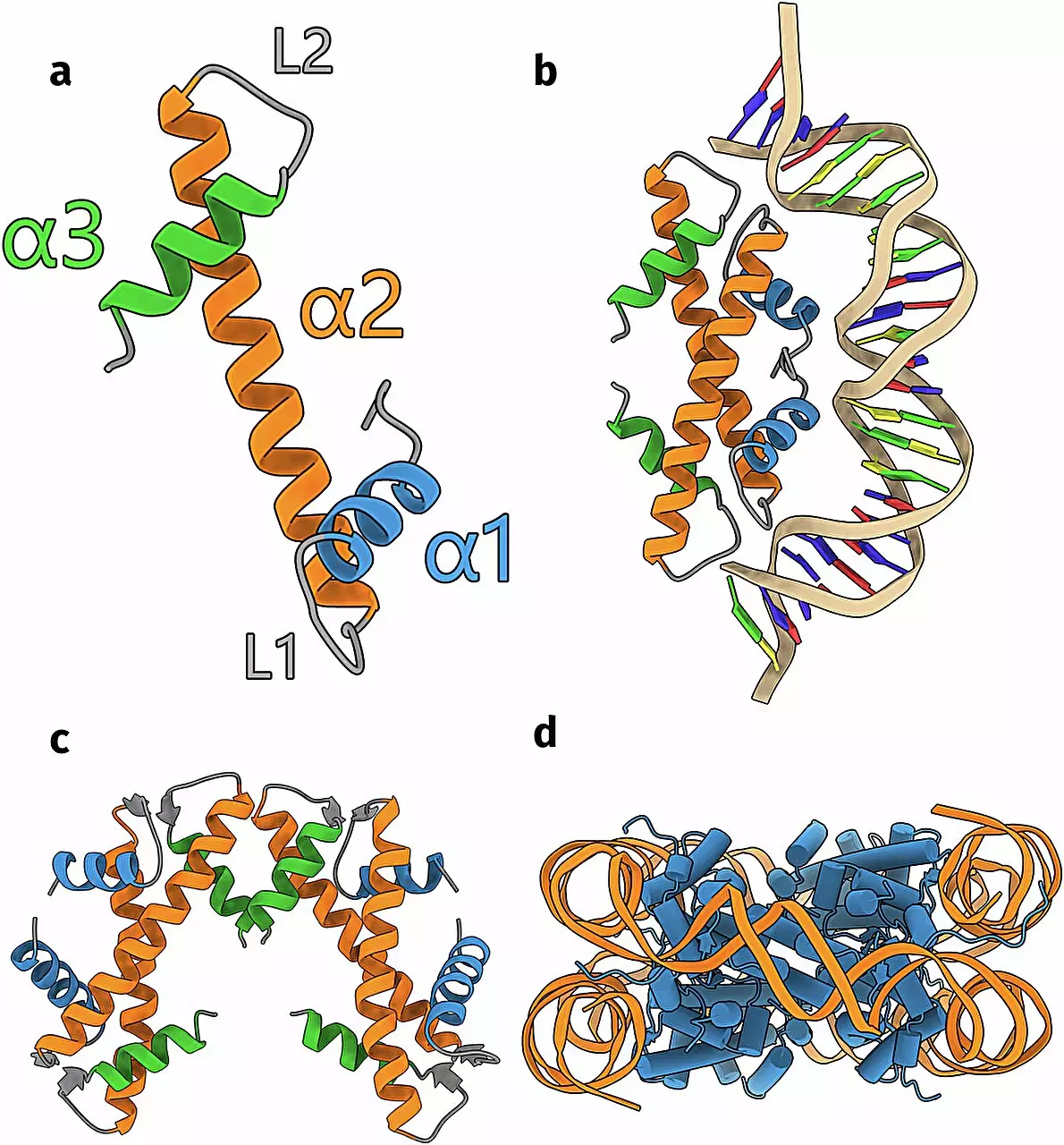Recent scientific advancements have unveiled a fascinating truth about single-celled organisms, specifically bacteria and archaea; they also possess histones—vital proteins for DNA structuring. This revelation challenges long-held assumptions that these proteins were exclusive to more complex life forms. Samuel Schwab, a Ph.D. candidate affiliated with the Dame group at the Leiden Institute of Chemistry, spearheaded groundbreaking research that reveals an astounding diversity of histones in these microorganisms. His team’s findings, published in Nature Communications, highlight how these proteins not only differ from known histones but also possess unique structural and functional attributes.
Histones are crucial to the organization of DNA, a molecule so extensive that it defies easy containment within a cell. Traditionally, it has been understood that histones form nucleosomes—spherical complexes that coil DNA into manageable pieces. Until now, the scientific community primarily considered histones as characteristics of eukaryotic cells, overlooking their presence and potential variability within prokaryotic cells like archaea and bacteria.
With the unexpected detection of histones in these simpler forms of life, scientists began to explore the implications of this revelation. Schwab’s analysis digs deeper, revealing that the sheer genetic variety in single-celled organisms approaches a previously underappreciated complexity.
A key highlight of Schwab’s study is the role of artificial intelligence in predicting the structures of these diverse histones. The introduction of AlphaFold, an AI algorithm capable of forecasting protein structures from DNA sequences, proved invaluable in this research. Schwab meticulously sifted through an extensive protein database, identifying over 6,000 DNA sequences that likely coded for novel histones. Collaborating with advanced computational resources such as the Leiden supercomputer facility, ALICE, Schwab and his colleagues brought forth predictions that would offer significant insights into histone diversity.
Utilizing AI represents a paradigm shift in biological research. It allows for the examination of a vast assortment of genetic data that previously was insurmountable through traditional experimental methods. Schwab’s efforts exemplify how computational biology bridges the gap between theoretical predictions and empirical experimentation.
Schwab’s research categorized histones into 17 distinct groups, revealing that some of these structures were already known, while others were entirely unprecedented. A fascinating turn of events occurred when the researchers experimentally validated one of the newly identified structures in the laboratory. The experimental results closely mirrored the AI predictions, bolstering the reliability of using computational models in biological research.
These diverse histone structures beg further inquiry regarding their specific functions within the cellular framework of archaea and bacteria. One striking observation was the discovery of histones that interact not only with DNA but also with cellular membranes. This unexpected twist points to a broader role of histones beyond mere DNA organization, opening avenues for future investigations into their functional diversity.
The contributions of Schwab and the Dame group extend beyond academic curiosity; they serve to enhance our comprehension of DNA organization across different life forms. Understanding the varied roles that histones play can illuminate how organisms of varying complexity manage their genetic information. As Remus Dame noted, the information gleaned from these studies could act as a crucial guide for interpreting DNA data and measurements, an area still rife with unanswered questions.
With the foundation laid by this research, numerous avenues remain open for future exploration. Expanding our understanding of histones may unravel further insights into evolutionary biology, genetics, and even the developmental mechanisms among organisms. Each discovery in histone research not only enriches our knowledge but also calls for deeper investigation into the molecular choreography that underpins cellular life, challenging us to unravel the complexities hidden within these seemingly simple organisms.
As the realm of microbiology continues to evolve, the meticulous work of researchers like Samuel Schwab underscores the importance of viewing life through multi-faceted lenses. Uncovering the diversity of histones in single-celled organisms does not merely satisfy academic interest; it provokes critical questions about the essence of life and the intricate processes that sustain it. With tools like AI driving research, the next chapters in our understanding of these fundamental proteins promise to be as enlightening as they are essential.

